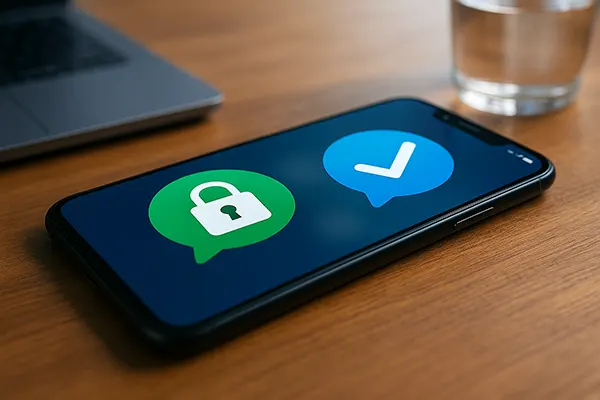Choosing a messaging app in 2025 is no longer just about interface design or available emojis. Users now face a more nuanced dilemma: should they favour privacy or convenience? This decision shapes their digital habits, affecting not only their communication but also their data safety. In this article, we explore how modern users weigh their priorities and what factors influence their choice.
Changing Priorities in the Messaging Landscape
The rise of privacy scandals and increasing awareness about data exploitation have forced users to reconsider their digital footprint. While ease of use remains critical, more people now evaluate how their information is handled. The result is a gradual shift towards messengers that prioritise end-to-end encryption and do not harvest metadata for profiling.
In 2025, global events like new data privacy laws and whistleblower leaks have deepened public scepticism. Messengers such as Signal and Threema have gained traction for their transparent data policies. These tools lack the robust ecosystem of WhatsApp or Telegram, but they win loyalty by limiting server-side tracking and prioritising anonymity.
Despite that, convenience remains a powerful pull. Users with large contact lists still default to the tools everyone else uses. The result is a fragmented digital environment where the same person uses multiple messengers to balance different communication needs.
Adoption Patterns Across Age and Demographics
Young adults aged 18–29 are the most inclined to explore privacy-focused messengers. This group is highly mobile, tech-savvy, and tends to mistrust centralised data systems. They appreciate features such as ephemeral messages and open-source verification.
By contrast, users aged 45+ often prioritise compatibility and ease of access. They are more likely to stick with default apps preinstalled on their devices or those recommended by family or friends. For them, convenience beats encryption — unless a specific event shifts their awareness.
Professionals and corporate users represent another segment. Many enterprises have enforced the use of secure messengers for internal communication, leading to widespread adoption of tools like Wire or Wickr in work environments. However, these rarely cross into personal use.
Features That Tip the Balance
When choosing between privacy and convenience, specific features play a defining role. End-to-end encryption is now standard in most top-tier apps, but how the app stores backups, handles metadata, and allows anonymous signups often sets them apart.
For example, Telegram offers convenience with cloud sync and large group support, but its default chats are not end-to-end encrypted. Signal, on the other hand, encrypts everything by default but lacks multidevice support with full synchronisation.
Another major factor is interoperability. In the EU, the Digital Markets Act has pushed dominant apps to enable cross-platform communication. This has allowed users to stay within privacy-respecting messengers while still communicating with those on mainstream ones.
The Influence of Regional Regulation
Legislation has had a direct impact on messenger usage. In the EU, strict GDPR enforcement and the DMA have reshaped how apps collect and share user data. Companies failing to comply have faced fines and loss of trust, prompting many to reform their policies.
In the US, regulatory fragmentation has slowed progress, but growing state-level pressure is changing the landscape. California’s CCPA and similar laws in other states have elevated data privacy on the public agenda, indirectly supporting the adoption of secure messengers.
Other regions, like Asia-Pacific, display mixed trends. While countries like South Korea have strong data protection laws, others still favour super-apps with broad surveillance capabilities. Users adapt by compartmentalising their usage — using privacy-first apps for sensitive chats and mainstream apps for casual interaction.

User Behaviour and Future Outlook
Messenger usage in 2025 reflects a maturing digital audience. People are no longer passively adopting apps; they are comparing policies, reading terms of service, and actively participating in security discussions. Social media discourse, tech journalism, and word-of-mouth have become powerful tools in spreading awareness.
Gamified onboarding in secure messengers has helped to reduce user friction. Features such as QR contact sharing, automatic message deletion, and backup encryption now come standard, especially in apps targeting young or tech-conscious audiences.
Looking forward, interoperability, decentralisation, and user education are expected to define the future. Projects like Matrix and SimpleX hint at a messaging future that is serverless and peer-to-peer, potentially solving the trade-off between privacy and convenience.
How Developers Are Responding
App developers are responding to this changing dynamic by improving UX without compromising on security. Secure messengers have introduced smoother registration processes, simplified group creation, and more intuitive settings.
There’s also increased focus on transparency. Many apps now publish transparency reports, open-source their code, and include real-time notification of policy changes. This builds trust and provides users with verifiable assurance about data usage.
Ultimately, the line between private and convenient is becoming thinner. Informed users, paired with proactive developers and tighter regulation, are reshaping the messaging ecosystem to offer tools that do not force compromise — but instead offer balance.




